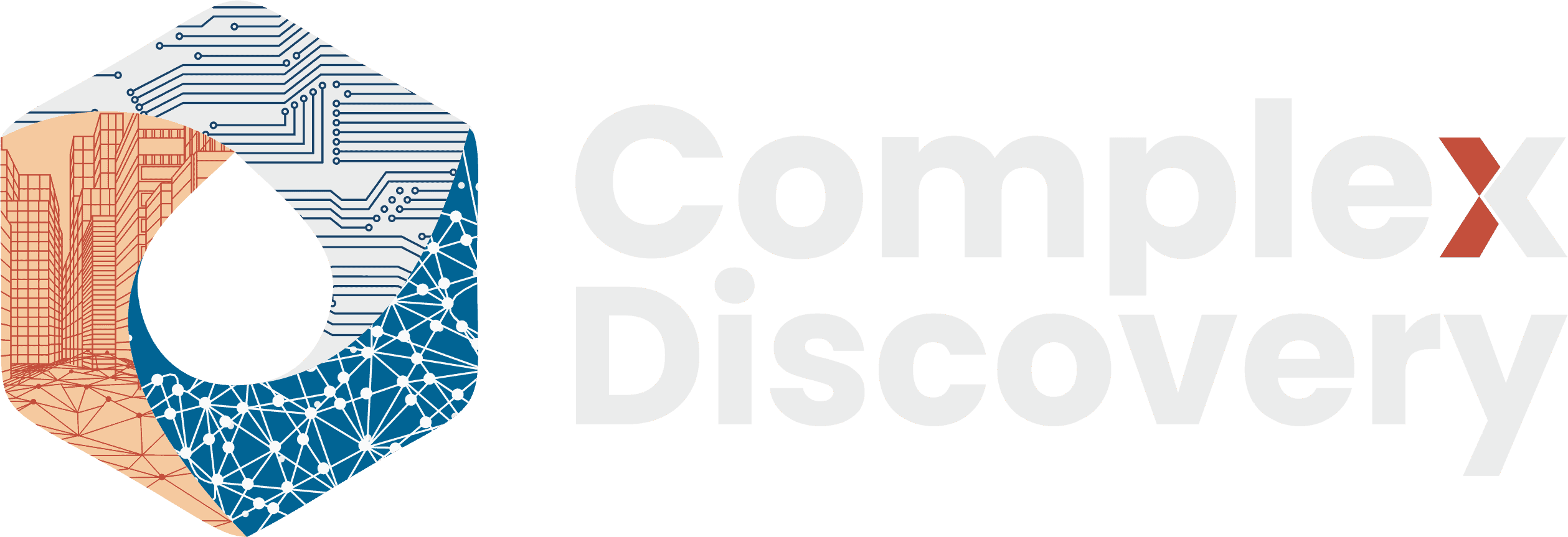Editor’s Note: October 2025 brought clarity and complexity to the intersecting worlds of AI, cyber risk, and digital governance. This month’s Five Great Reads are as much a mirror as a compass, reflecting both hard-won lessons and emerging priorities as organizations, governments, and individuals navigate a period of intense technological transition.
The market for generative AI tools in eDiscovery and legal services—so promising just quarters ago—shows distinct signs of cautious recalibration. Our lead story distills how the excitement around GenAI, fueled by rapid pilot launches, now meets the reality of uncertain ROI and reliability concerns. The takeaway? The legal and compliance sectors will embrace innovation only to the extent that it is measured, validated, and aligned with operational rigor.
Cybersecurity remains firmly at center stage, not just as a technical discipline but as a challenge of governance and attribution. The exposé on Europe’s largest SIM farm operation highlights how anonymity and illicit infrastructure pose new risks, compelling cross-border law enforcement to rethink how evidence, threat intelligence, and legal frameworks must adapt to new threat vectors. Meanwhile, evolving cyber strategies across Europe point to hybrid attacks that blend physical, digital, and aerial domains—reinforcing that resilience depends on both technology and collaboration.
Government adoption of AI received unprecedented attention this month, marked by the emergence of the Agentic State model. The pressure is on: to deploy algorithms that drive efficiency, yes, but also uphold transparency, accountability, and the public trust. As Estonia and other technology-leading nations demonstrate, governance for AI is no longer optional—it’s foundational. On a very human level, the legal, compliance, and technology communities are reassessing their relationship with high-profile events and industry convenings. Our fourth feature article uncovers how these gatherings have become stages for both influence and unease, as leaders balance strategic vision with competitive intelligence—the “theatre” of legal tech now as powerful as its substance.
Finally, the promise of AI assistants in professional practice faces its toughest test yet. This issue’s deep research piece presents an unsparing review of model performance, finding accuracy issues in nearly half of all complex responses. The message is clear: human expertise must remain indispensable, and the journey from hype to habit demands vigilant oversight.
As always, these stories offer more than headlines. They provide practical insight, cautionary guidance, and strategic context for leaders ready to translate uncertainty into opportunity as 2025 draws to a close.
Content Assessment: Five Great Reads on Cyber, Data, and Legal Discovery for October 2025
Information - 94%
Insight - 92%
Relevance - 93%
Objectivity - 94%
Authority - 95%
94%
Excellent
A short percentage-based assessment of the qualitative benefit expressed as a percentage of positive reception of the recent article from ComplexDiscovery OÜ titled, "Five Great Reads on Cyber, Data, and Legal Discovery for October 2025."
Industry Newsletter
Five Great Reads on Cyber, Data, and Legal Discovery for October 2025
ComplexDiscovery Staff
October 2025 was a month defined by rapid technological change, AI governance milestones, and an increasingly aggressive cyber threat environment. From global breakthroughs in government AI strategy to extraordinary law enforcement action against digital anonymity networks, these five reads reveal how the intersection of innovation, security, and market skepticism is reshaping our field. Each article provides perspective on key inflection points that will resonate well into 2026.
Click any headline below to read the complete article.
Interim Signals: A Hybrid Nowcast of GenAI ROI and Market Caution in 2H 2025 eDiscovery
Amid a generative AI gold rush, this interim market analysis finds a curious blend of optimism and caution among eDiscovery professionals. While 63% report rapid deployment of GenAI pilots—aiming to cut review costs and accelerate matter resolution—a robust 48% express concerns about ROI clarity, real-world reliability, and risk management. Drawing from survey signals and synthetic persona analysis, this report outlines why 2H 2025 will be remembered for “hybrid nowcasting”: rapid experimentation balanced against intense due diligence, with organizations seeking verified value before fully committing budgets to AI-enabled tools. The result? A divided market where early adopters reap efficiency gains while others prioritize risk mitigation and measure every step toward AI-powered transformation.
The Agentic State: A Global Framework for Secure and Accountable AI-Powered Government
As governments race to deploy advanced AI to improve public services, this landmark article introduces a comprehensive global framework—the Agentic State—for securing, governing, and auditing high-stakes decision-making by algorithms. The framework, praised by tech and policy leaders alike, combines mandatory transparency, explainability controls, and real-time auditing of “government agents” to mitigate risks of bias, abuse, and accidental harm. With real-world examples from Europe, Asia, and North America, the piece lays out actionable recommendations for aligning legal mandates, technical best practices, and cross-border cooperation—offering a policy playbook for any nation serious about ethical AI in the public sector.
When Anonymity Becomes a Weapon: Inside the Takedown of Europe’s Largest SIM Farm Operation
Unprecedented police coordination swept up more than 400,000 SIM cards and dismantled Europe’s largest infrastructure for anonymous phone-based cybercrime. This investigative feature reveals how so-called “SIM farms” enabled everything from business email compromise to phishing and ransomware attacks—and why European agencies are now treating anonymity itself as a frontline threat. The analysis goes beyond the headlines, exploring evolving tactics for attribution, the debate over lawful access, and the operational lessons for legal and cybersecurity professionals charged with digital evidence and threat response.
The New Office of Influence: Inside the Fear and Theatre of Legal Tech Events
Legal tech events are evolving beyond simple showcases or sales opportunities—they are becoming new arenas of influence. This behind-the-scenes look captures how industry events now blend thought leadership, competitive intelligence, and even subtle psychological theatre to shape perceptions and buying decisions. Through interviews and field reporting, the article details why C-suite participants describe these gatherings as both collaborative and highly competitive, driven by a need to both “cut through the noise” and guard reputational risk. Lessons abound for marketing leaders, corporate counsel, and tech buyers navigating this new era of industry influence.
Beyond the Hype: Major Study Reveals AI Assistants Have Issues in Nearly Half of Responses
AI assistants are everywhere in legal, compliance, and daily business—yet this major independent study exposes a sobering reality: nearly 45% of AI-generated responses to news and professional queries contained factual inaccuracies, inconsistencies, or critical gaps. Conducted by the European Broadcasting Union and BBC and evaluating over 3,000 responses across 18 countries and 14 languages, the research found systemic failures in leading AI tools—raising urgent questions for organizations that increasingly rely on these assistants for research, compliance decision-making, and evidence generation. The findings underscore that, despite rapid advances, robust human oversight and verification remain essential wherever accuracy is not negotiable.
Additional Coverage: Industry Analysis & Insights
Beyond our core five reads, October’s coverage brings essential context on evolving cybersecurity threats, governance models, and legal technology strategies—each article serving as a valuable lens into the modern digital and regulatory landscape.
The Battlefield of eDiscovery: Strategic Considerations for Buyers and Providers in the Digital Age
This incisive report explores how the eDiscovery market has become a true battleground, with established service providers defending turf against nimble upstarts and disruptive technologies. It outlines the tactical and strategic considerations buyers must weigh, from cost-control pressures to vendor differentiation, risk allocation, and the growing influence of automation and AI. Providers and buyers alike will benefit from an analysis that demystifies market complexity and highlights winning approaches in an era defined by relentless change and heightened client expectations.
Europe Under Siege: How Cybercriminals and State Actors Are Rewriting Digital Threat Rules
In the wake of high-profile hybrid attacks and cyber-enabled espionage campaigns across Europe, this feature details the shifting alliances, techniques, and threat paradigms challenging both public and private sector defenders. The narrative navigates recent incidents that exposed vulnerabilities in critical infrastructure and illustrates how state-sponsored and criminal actors are blurring traditional attack boundaries. Recommendations center on fortifying digital sovereignty, evolving incident response, and reshaping cross-border security collaborations.
Cyberocracy and the Efficiency Paradox: Why Democratic Design is the Smartest AI Strategy for Government
This thought-provoking essay tackles the dilemma many governments face as they leverage AI to streamline public administration. While AI promises dramatic efficiency gains, the article investigates why too much automation risks eroding core democratic values—such as transparency, fairness, and public trust. Drawing from recent case studies, it advocates for governance models that embed accountability and participatory design, ultimately making the case that “democratic-by-design” AI is not only ethically imperative but operationally smart.
When the Sky Falls Silent: Europe’s New Hybrid Threat Landscape
Recent drone incursions and cross-border digital disruptions have shown how quickly skies—and information flows—can go silent in modern Europe. This article charts the convergence of airborne and cyber vectors in hybrid campaigns, outlining the operational, legal, and technical challenges faced by enterprises and governments alike. It presents actionable guidance for rethinking risk matrices, strengthening aerial and electronic situational awareness, and preparing for the “anytime, anywhere” nature of emerging threats.
Cyber Law Toolkit 2025 Update Strengthens Global Legal Framework for Cybersecurity
With cyber legal frameworks under increasing scrutiny, this update highlights major changes and new resources in the globally respected Cyber Law Toolkit. The coverage spotlights practical enhancements for practitioners—from added treaty clarity and real-world scenario applications to improved coordination in cyber incident response. Legal and compliance teams will find tools and best practices to help interpret fast-changing obligations, manage multi-jurisdictional challenges, and support defensible processes amidst an ever-evolving threat environment.
Looking Ahead
The stories of October 2025 highlight a sector at the edge of historic transformation. As organizations weigh AI innovation against risk, and enforcement agencies close in on cyber anonymity and hybrid threats, agility and informed decision-making are at a premium. November promises new developments in AI regulation, digital governance, and operational best practices, setting the stage for a critical fourth quarter in cyber, data, and legal discovery.
- Click here to view recent Five Great Reads Newsletters
- Click here to subscribe to Five Great Reads Update
October 2025 Industry Spotlight
Individuals and Organizations Mentioned in the October Edition Reporting
Leading Individuals (A–Z) — With Context
-
Alexander Dobrindt
Germany’s Interior Minister; called Munich drone incursions a “wake-up call” and urged stronger airspace defense (When the Sky Falls Silent). -
Andres Raieste
SVP and Global Head of Public Sector at Nortal; co-author of the report “Government Efficiency in the Age of AI: Toward Resilient and Efficient Digital Democracies” (Cyberocracy and the Efficiency Paradox). -
Dr. Keegan McBride
Senior Policy Advisor for Emerging Technology and Geopolitics at the Tony Blair Institute for Global Change; co-author of the same foundational digital democracy report (Cyberocracy and the Efficiency Paradox). -
Dr. Mihkel Solvak
Associate Professor at University of Tartu; co-author of the Estonian digital democracy report (Cyberocracy and the Efficiency Paradox). -
Dr. Ott Velsberg
Estonia’s Chief Data and AI Officer; co-author of the Estonian digital democracy report, key voice on digital government best practices (Cyberocracy and the Efficiency Paradox). -
Luukas Ilves
Advisor to the First Deputy Prime Minister of Ukraine for AI, former Chief Information Officer of Estonia; lead author of “The Agentic State” framework for AI-powered government (The Agentic State). -
Major General Paul Tedman
Head of UK Space Command; revealed details of Russia’s electronic attacks on British military satellites (When the Sky Falls Silent). -
Manuel Kilian
Managing Director of Global Government Technology Centre Berlin; lead author of “The Agentic State” vision paper (The Agentic State). -
Mykhailo Fedorov
Ukraine’s First Deputy Prime Minister; cited as highlighting Ukraine’s pioneering agentic government model (The Agentic State). -
‘Syrphid’
Handle of the operator behind the LockBit4 ransomware group, responsible for attacks cited in cybersecurity coverage (Europe Under Siege).
Leading Organizations (A–Z) — With Context
-
BBC
Lead research participant in the “News Integrity in AI Assistants” international study (Beyond the Hype). -
ComplexDiscovery OÜ
Publisher of the newsletter and all featured articles. -
Cyber Law Toolkit
World’s foremost interactive guide to international cyber law; its 2025 update featured as a major advance in legal frameworks for cybersecurity (Cyber Law Toolkit 2025 Update). -
EDRM (Electronic Discovery Reference Model)
Industry framework used to benchmark legal technology processes and referenced in articles such as Interim Signals and The Battlefield of eDiscovery. -
European Broadcasting Union (EBU)
Producer of the “News Integrity in AI Assistants” study (Beyond the Hype). -
European Union Agency for Cybersecurity (ENISA)
Source of the ENISA Threat Landscape 2025 report; identified and analyzed cyber hybrid threats facing Europe (Europe Under Siege). -
Europol
Coordinated multi-national law enforcement action in the SIMCARTEL takedown (When Anonymity Becomes a Weapon). -
Global Government Technology Centre Berlin
Co-led authorship of “The Agentic State” and participated in global AI governance design. -
Government of Estonia
Exemplified best practices in digital governance and AI infrastructure (The Agentic State and Cyberocracy and the Efficiency Paradox). -
Government of Ukraine
Provided leadership and case examples in agentic government adoption; referenced in drone and cyber warfare coverage. -
Munich Airport
Location of high-profile drone incursions that illustrated modern hybrid threat scenarios (When the Sky Falls Silent). -
NATO Cooperative Cyber Defence Centre of Excellence (CCDCOE)
Coordinated creation and updates of the Cyber Law Toolkit, developed international legal guidance for cyber operations (Cyber Law Toolkit 2025 Update). -
Nortal
Estonian technology consultancy; contributed to and co-authored the foundational digital government efficiency report (Cyberocracy and the Efficiency Paradox). -
Republic of Estonia Ministry of Justice and Digital Affairs
Involved in authorship and reference cases for digital government and AI policy reports (Cyberocracy and the Efficiency Paradox). -
Tallinn Digital Summit
Hosted the presentation of “The Agentic State” framework and expert policy discussions (The Agentic State). -
Tony Blair Institute for Global Change
Contributor to the foundational digital democracy research (Cyberocracy and the Efficiency Paradox). -
UK Space Command
Led British responses to Russian electronic warfare targeting satellites (When the Sky Falls Silent). -
University of Tartu
Co-authored and contributed research for the Estonian digital democracy and AI government efficiency report (Cyberocracy and the Efficiency Paradox).
About ComplexDiscovery OÜ
ComplexDiscovery OÜ is a digital publication based in Estonia, known for delivering high-quality analysis and insights at the intersection of cybersecurity, information governance, and eDiscovery. Through surveys, research, and reporting, ComplexDiscovery connects industry developments with real-world applications to support informed decision-making. Learn more at ComplexDiscovery.com.
Assisted by GAI and LLM Technologies
- An Abridged Look at the Business of eDiscovery: Mergers, Acquisitions, and Investments
- eDisclosure Systems Buyers Guide – Online Knowledge Base
Source: ComplexDiscovery OÜ

























